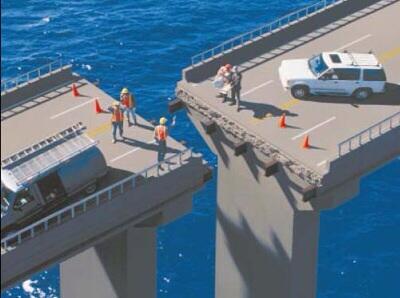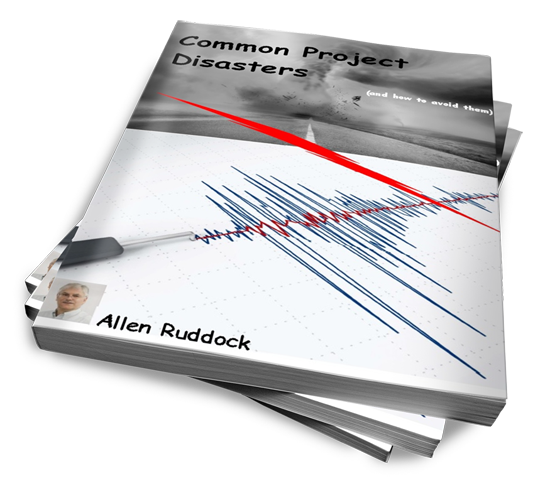Have you ever bought or made something with the best intentions of using it, but then it ends up sitting on a shelf gathering dust? After a while the spiders know more about it than you and you can’t even remember why you bought or made it.
Is your project plan gathering digital equivalent of that dust, sitting on a server or shared drive somewhere? When was the last time it saw the light of day?
 Your project plan is one of the most important tools at your disposal. But if it is not maintained with a certain amount of TLC (that’s tender loving care), it might as well not exist. That’s not an excuse for you to not have a plan though. A project without an up to date plan….. is broken!
Your project plan is one of the most important tools at your disposal. But if it is not maintained with a certain amount of TLC (that’s tender loving care), it might as well not exist. That’s not an excuse for you to not have a plan though. A project without an up to date plan….. is broken!
Good intentions
Most project managers start out with a plan and the intention of maintaining it. I say most, but there are some charlatans calling themselves project managers that claim they don’t need one. You can usually spot them a mile off due to the ten-gallon hats, spurs and horses tethered outside the office – they are the cowboys in our profession. But I digress.
As I said, most project managers intentions are good, But the road to project disaster is paved with good intentions. An out of date plan is one of the most common planning problems. Maintaining a project plan requires discipline, organisation, structured processes and a fair amount of effort. When things get hectic or problems occur, that organisation and discipline can break down and the effort gets re-directed to ‘more pressing’ tasks. I put ‘more pressing’ in quotes because the plan is a key control tool and maintaining it should always be a priority. Whatever difficulties you encounter in your project, it is the well maintained plan that will enable you to assess the consequences of any course of action you propose to take.
Without that plan how can you assess the impact your actions will have on the rest of the project. It would be like blindfolding the pilot and then telling him to take emergency evasive action. Which way? What else will be impacted? Etc. etc. etc.
The plan drives the project
You don’t use a map to see where you have been, ticking off the towns and villages you’ve passed through after the event. No, you use a map to understand how to get to where you want to get to. And that’s the primary reason for having a plan. It maps out your journey to delivery of your project. It allows you to spot the potential bottlenecks, conflicts and alternative approaches available to you. It enables you to make informed decisions.
Too often I have seen plans maintained purely to show what has been delivered. What progress has been made. What value has been earned. Don’t get me wrong. These are all valuable outputs from a plan and very necessary for demonstrating progress, claiming contractual payments etc. But if the plan itself bears little or no resemblance to the activity that is actually going on you can’t use that plan to help you complete the project.
One programme I managed the central PMO for was run on that basis. The project plan was there to show the client and claim stage payments based on earned value. But the real plan – the one that drove the activity – was held separately. It was mostly Excel spreadsheets and jealously guarded by the project managers. It was their USP, their edge over their own colleagues. There was also a third plan with just some high level milestones used for their own internal management and drove performance payment for the managers and consultants. It was all very divisive and extremely counter-productive.
Maintaining the plan
As I said above, the plan needs to be updated and maintained to reflect progress through the tasks, delivery against milestones and to reflect the experience of the project team to date. Some things may prove easier or quicker than expected. Others will take longer. By reflecting these back into the plan the project manager can understand the impact on deadlines, internal and external dependencies and on the amount of contingency they have used/have remaining.
The resources allocated to the project may also change and this needs to be reflected in the updated plan. Many project managers have to make assumptions about the availability and involvement of key business resources in the project. Those assumptions will have been incorporated in the original plan and need to be validated constantly throughout the project with any corrections factored in to the plan.
The whole rationale here is to use the experience of the plan so far to inform and enhance the plan for the remainder of the project. Test, measure, adjust.
Change Requests
A key area often overlooked when maintaining the plan is change requests. I don’t think I have worked on any sizeable project that hasn’t experienced some level of change in the requirements. But all too often, these changes are not properly impact assessed and the impact fed in to the plan. Instead they creep into the project quietly eating away at the contingency. On one major project recovery I assisted with, I spent over three months getting the project change request and associated planning and control processes back under control and the go-live was pushed out by around 9 months as a result.
So the absence of an up to date plan is a key sign that a project is not fully under control. That in itself does not spell disaster (but it isn’t a good sign). However, if something else does go wrong, its impact could be greatly exacerbated by the absence of a good plan, turning a controllable issue into a potential catastrophe.
How to avoid planning hell…
The simple and obvious answer is… maintain your plan, updating it for all the things we discussed above. But if it were that easy you’d be doing it already and we’ve already said the good intentions get lost along the way. Why is it so hard then? Let’s look as some causes and potential solutions:
- Disciplines not followed – often because they weren’t well defined in the first place. At the outset of your project, define a simple and regular update process. Document it and communicate it to all the team and then check it is being followed.
- Maintaining the plan takes too much of your time – it’s not the most glamorous of tasks, does require a certain mindset and can easily get pushed to the back of the to-do list. So include budget for a dedicated planner who will do the hard labour for you. If you can find a good one, these individuals are worth their weight in gold. They will process the changes, do basic due diligence to look for anomalies and then take you through the impacts. That way you focus your valuable time on the consequences rather than the mechanics.
- Planning is an overhead – with the last point in mind, ensure your plan and budget treats planning as a key part of project delivery and not an overhead to be challenged and cut.
- Too much detail creates a maintenance nightmare – it is nigh-on impossible to maintain a detailed project plan of all tasks across a project that extends beyond around three months. The knock on effects of each change are too many and varied. I maintain a high level plan for the entire project but a detailed rolling plan of around 3 months with period refreshes to bring another month in to the detail. I constantly review the assumptions and assessments embedded in the high level plan to ensure it remains valid, but I don’t waste excessive amounts of the team’s time trying to maintain endless detail.
- Scope changes not reflected in the plan – ensure the change control process feeds into the planning process and planning is properly considered in the impact assessment of any change. Also keep a tight control on use of contingency.
- Keep it simple – the more complex the plan, the more things you try to do in parallel, the harder the plan becomes to manage. Break complex plans down in to discreet sub plans and manage each one separately, but with a very careful eye on the interdependencies.
- Contingency – every plan needs contingency. It’s a bit like riding a bicycle without a helmet. Sooner or later you’ll wish you had it.
Effective and controlled planning is a vital part of project management. Every project manager must understand the disciplines and ensure they are followed. You don’t have to be a great planner to be a great project manager. But you do have to recognise the value and importance of planning and ensure it is properly conducted.
This blog post is one of the articles featured in my forthcoming e-book “Common Project Disasters (and how to avoid them). Don’t put your project on a collision course to disaster – sign up here or click on the image to get your copy as soon as it is available
The post Potential project disaster – An out of date plan appeared first on ARRA Management Ltd website.



















